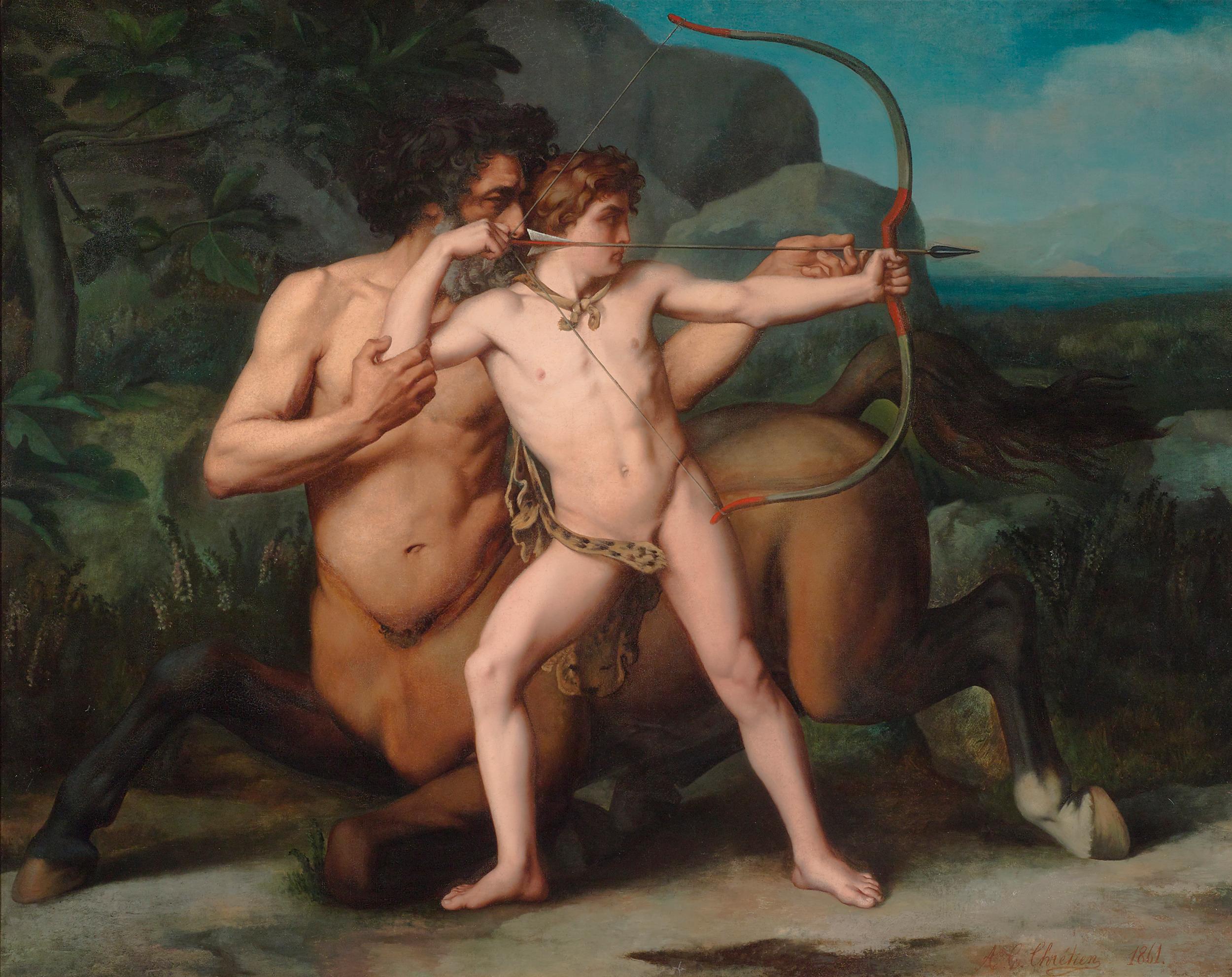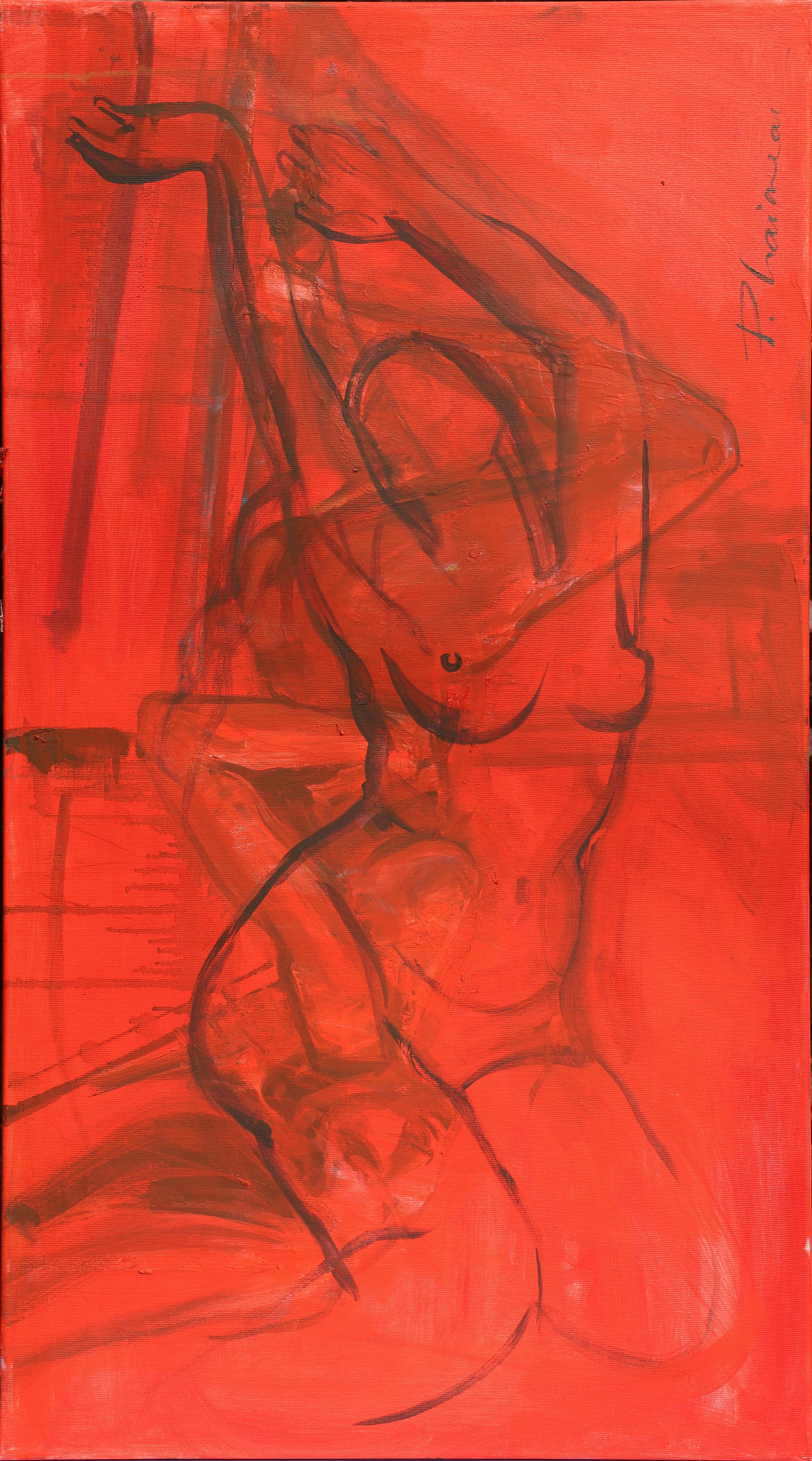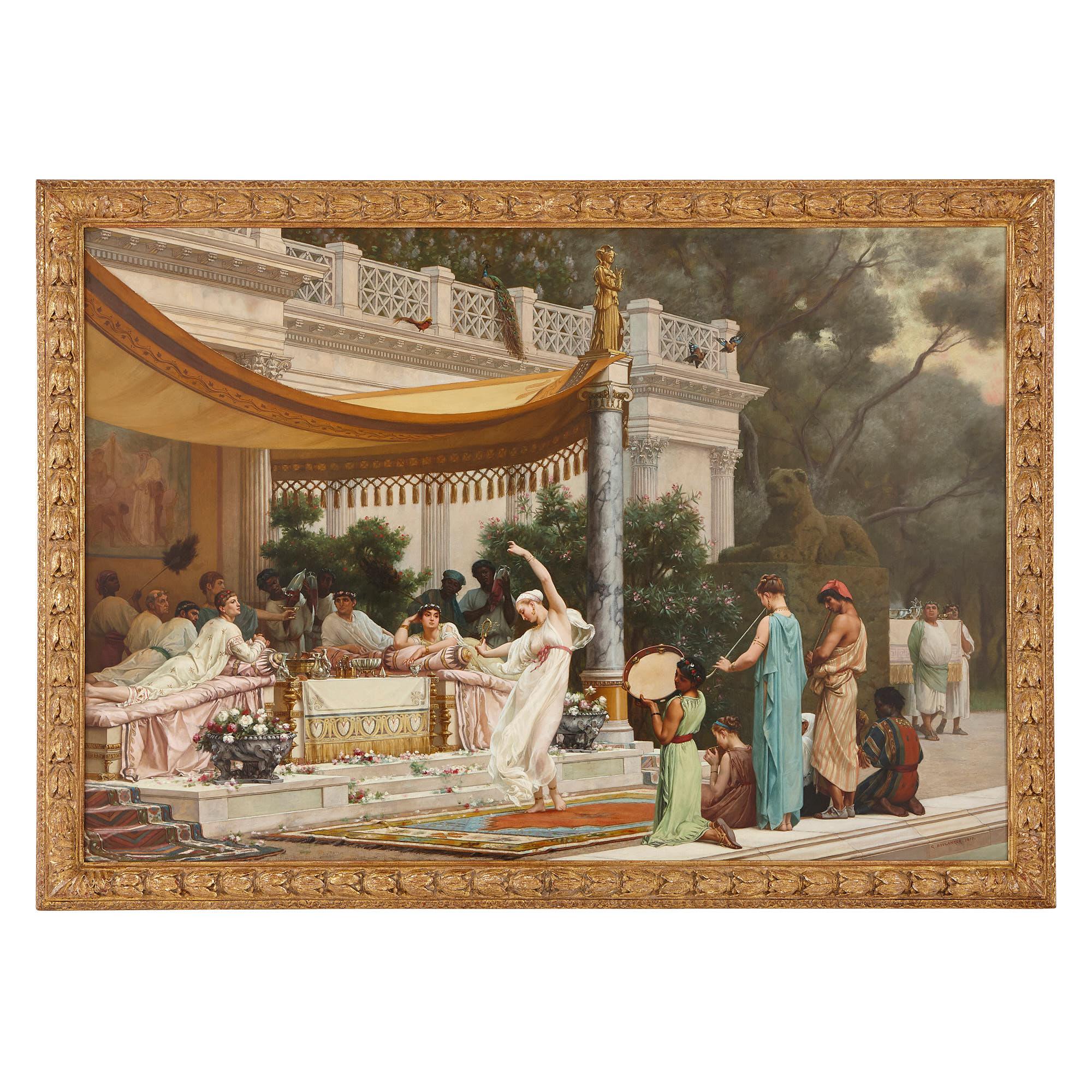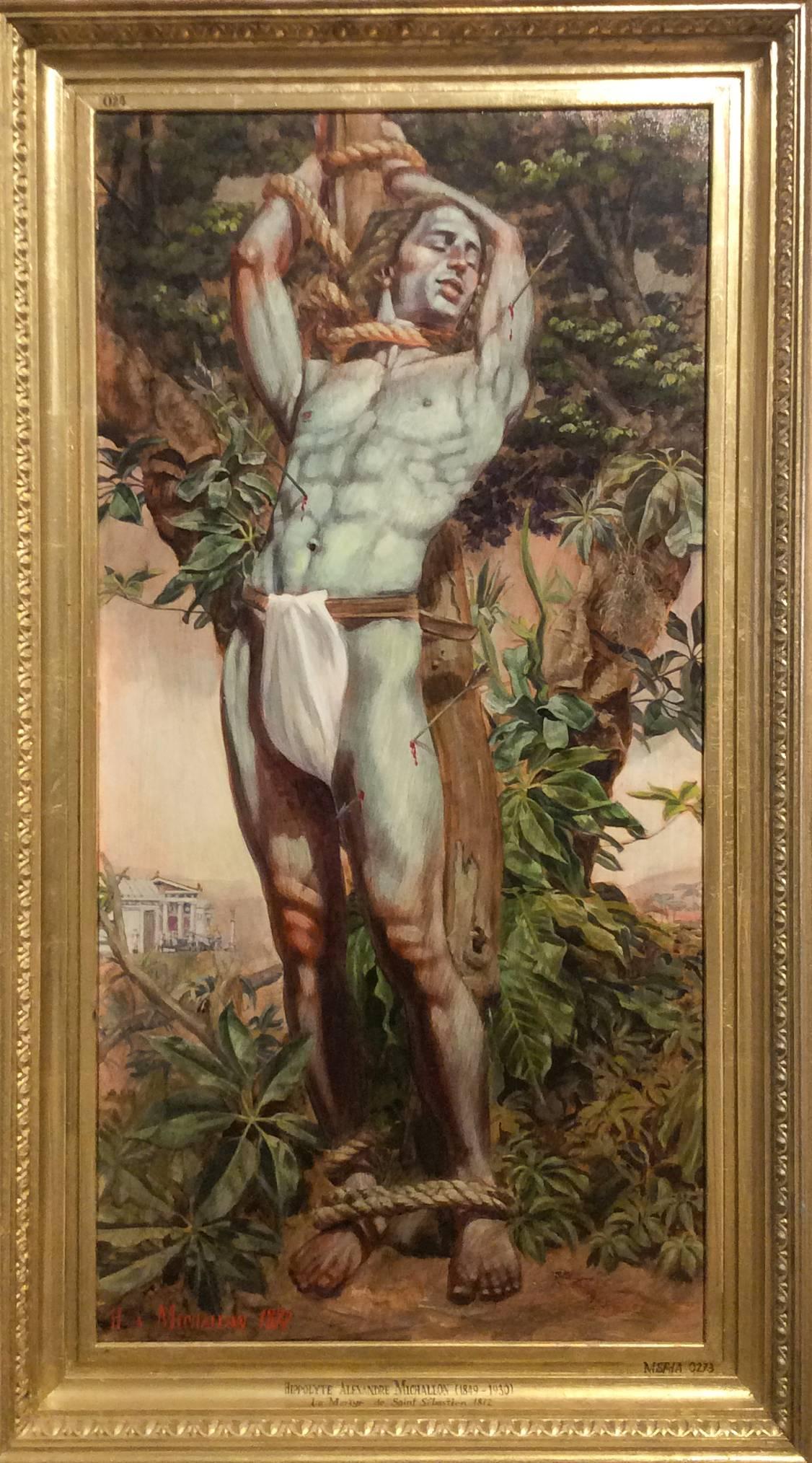Items Similar to Nude Woman
Want more images or videos?
Request additional images or videos from the seller
1 of 15
UnknownNude Womanca. 1925
ca. 1925
About the Item
Beautiful female nude in profile. European, ca. 1920-30. Oil on canvas, 31.5 x 35.75 inches; 35.5 x 39.75 inches framed. Sign indistinctly upper right.
A few areas of paint loss (very minor) but overall very good condition.
- Creation Year:ca. 1925
- Dimensions:Height: 39.75 in (100.97 cm)Width: 35.5 in (90.17 cm)Depth: 1 in (2.54 cm)
- Medium:
- Movement & Style:
- Period:
- Condition:
- Gallery Location:Wilton Manors, FL
- Reference Number:1stDibs: LU245210680462
About the Seller
4.9
Platinum Seller
These expertly vetted sellers are 1stDibs' most experienced sellers and are rated highest by our customers.
Established in 2007
1stDibs seller since 2015
329 sales on 1stDibs
Typical response time: 1 hour
- ShippingRetrieving quote...Ships From: Wilton Manors, FL
- Return PolicyA return for this item may be initiated within 7 days of delivery.
More From This SellerView All
- Female Bather (Nude Women)Located in Wilton Manors, FLAnn Brockman (1895–1943) was an American artist who achieved success as a figurative painter following a successful career as an illustrator. Born in California, she spent her childhood in the American Far West and, upon marrying the artist William C. McNulty, relocated to Manhattan at the age of 18 in 1914. She took classes at the Art Students League where her teachers included two realist artists of the Ashcan School, George Luks and John Sloan. Her career as an illustrator began in 1919 with cover art for four issues of a fiction monthly called Live Stories. She continued providing cover art and illustrations for popular magazines and books until 1930 when she transitioned from illustrator to professional artist. From that year until her death in 1943, she took part regularly in group and solo exhibitions, receiving a growing amount of critical recognition and praise. In 1939 she told an interviewer that making money as an illustrator was so easy that it "almost spoiled [her] chances of ever being an artist."[1] In reviewing a solo exhibition of her work in 1939, the artist and critic A.Z Kruse wrote: "She paints and composes with a thorough understanding of form and without the slightest hesitancy about anatomical structure. Add to this a magnificent sense of proportion, and impeccable feeling for color and an unmistakable knowledge of what it takes to balance the elements of good pictorial composition and you have a typical Ann Brockman canvas."[2] Early life and training Brockman was born in Northern California in 1895 and spent much of her youth in nearby Oregon, Washington, and Utah.[1][3] She met the artist William C. McNulty in Seattle where he was employed as an editorial cartoonist. They married in March 1914 and promptly moved to Manhattan where he worked as a freelance illustrator.[4][5] At the time of their marriage, Brockman was 18 years old.[6] Over the next few years, her career generally followed that path that her husband had previously taken. His art training had been at the Art Students League beginning in 1908; she began her training there after moving to New York in 1914.[1] After an early career as an editorial cartoonist, he freelanced as a magazine and book illustrator beginning in 1914; she began her career as a magazine and book illustrator in 1919.[7] He embarked on a teaching career in the early 1930s and not long after, she began giving art instruction.[8][9] While they both adhered to the realist tradition in art, their usual subjects were different. His prominently depicted urban cityscapes in the social realist whereas hers generally focused on rural landscapes. He was best known for his etchings and she for her oils and watercolors.[8][10] Brockman returned to the Art Students League in 1926 to take individual instruction for a month at a time from George Luks and John Sloan.[1] Despite their help, one critic said McNulty's "sympathetic encouragement and guidance" was more important to her development as a professional artist.[11] Career in art In the course of her career as illustrator, Brockman would sometimes paint portraits of celebrities before drawing them, as for example in 1923 when she painted the French actress Andrée Lafayette who had traveled to New York to play title role in a film called Trilby.[12] She would also sometimes accept commissions to make portrait paintings and in 1929 painted two Scottish terriers on one such commission.[13] During this time, she also produced landscapes. In 1924 she displayed a New England village street scene painting in the Second Annual Exhibition of Paintings, Watercolors, and Drawings in the J. Wanamaker Gallery of Modern Decorative Art.[14] Available sources show no further exhibitions until in 1930 a critic for the Boston Globe described one of her portraits as "well done" in a review of a Rockport Art Association exhibition held that summer.[15] Between 1931 and her death in 1943, Brockman participated in over thirty group exhibitions and five solos.[note 1] Her paintings appeared in shows of the artists' associations to which she belonged, including the Rockport Art Association, Salons of America, Society of Independent Artists, and National Association of Women Painters and Sculptors.[17][19]Between 1932 and 1935, her paintings appeared frequently in New York's Macbeth Gallery.[20][23][25][27] She won an award for a painting she showed at the Art Institute of Chicago in 1940.[41] In 1942, the Whitney Museum bought one of the paintings she showed in its Biennial of that year.[10] Critical praise for her work steadily increased during the decade that ended with her untimely death in 1943. In 1932, her painting called "The Camera Man" was called "a clever piece of illustration."[21] Three years later, a painting called "Small Town" gave a critic "the impression of freshness, honesty, and skill".[29] In 1938, a critic described her "Folly Cove" as "masterful" and said "Pigeon Hill Picnic" was "sustained by excellence of execution".[48] At that time, Howard Devree of the New York Times saw "evidence of gathering powers" in her work and wrote "she imparts a dramatic feeling to landscape. She even manages this time to do trees touched by Autumn tints without calendar effect, which is no small praise."[51] Three years later, a Times critic reported Brockman had "set herself a new high" in the watercolors she presented,[52] and another critic said the gallery where she was showing had not "for some time" shown "so outstanding a solo exhibitor as Ann Brockman."[2] Shortly before her death, a critic for Art News maintained that she was "one of America's most talented women painters".[46] After she had died, a critic said Brockman's paintings "displayed real power", adding that she was "highly rated among the nation's professional artists" and was known to give "aid and encouragement, always with a smile," both artists and to her students.[10] in reviewing the memorial exhibition at the Kraushaar Galleries held in 1945, reviewers wrote about the strength and vibrancy of her personality, the quality of her painting ("every bit as good, possibly better than people had thought"),[53] called her "one of the best of our twentieth century women painters", and credited "her sense of the vividness of life" as a contributor to "the unusual breadth that is so characteristic of her work.[11] One noted that her work was "widely recognized throughout the country" and could be found in the collections of prominent museums, including the Metropolitan Museum of Art, the Whitney Museum of American Art, and the Art Institute of Chicago.[54] Writing in the Times, Devree wrote, "even those who had followed the steady growth of this artist for more than a decade, each successive show being at once an evidence of new achievement and an augury of still better work to come, may well be surprised at the combined impact of the selected paintings in the present showing,"[55] and writing in the Brooklyn Daily Eagle, A.Z Kruse said she had made "extraorginary accomplishments", painted with "inordinate distinction" showing a "lyrical majesty," and possessed "a keen esthetic sense which did not deviate from truth."[54] Artistic style (1) Ann Brockman, undated drawing, black chalk on paper, 18 x 22 inches (2) Ann Brockman, High School Picnic, about 1935, oil on canvas, 34 1/4 x 44 1/4 inches (3) Ann Brockman, untitled landscape, about 1943, watercolor and pencil on paper, 15 1/4 x 22 1/2 inches (4) Ann Brockman, North Coast, undated watercolor, 21 1/2 x 30 inches (5) Ann Brockman, On the Beach, 1942, watercolor on paper, 16 1/2 x 20 inches (6) Ann Brockman, Lot's Wife, 1942, oil on canvas, 46 x 35 inches (7) Ann Brockman, New York Harbor, 1934, watercolor on paper, 13 1/2 x 19 1/4 inches (8) Ann Brockman, Youth, 1942, oil on board, 13 1/2 x 11 1/2 inches Brockman was a figurative painter whose main subjects were rural landscapes and small-town and coastal scenes. She worked in oils and watercolors, becoming better known for the latter late in her career. Most of her paintings were relatively small. Although she made figure pieces infrequently, the nudes and circus and Biblical scenes she painted were seen to be among her best works. In 1938, Howard Devree wrote: "Her gray-day marines and coast scenes are familiar to gallery goers and are favorites with her fellow artists. Her figure pieces have attained a sculptural quality without losing warmth or taking on stiffness. One spirited circus incident of equestriennes about to enter the big tent compares not unfavorably with many of the similar pictures by a long line of painters who have been fascinated by the theme. She imparts a dramatic feeling to landscape. She even manages this time to do trees touched by Autumn tints without calendar effect, which is no small praise."[51] Similarly, a critic for Art Digest wrote that year: "Fluently and virilely painted, [her] canvases suggest a close affinity between nature and humans. The artist takes her subjects out in the open where they may picnic or bathe with space and air about them. A fast tempo is felt in the compositions of restless horses and nimble entertainers busily alert for the coming performance. Miss Brockman is also interested in portraying frightened groups of people, hurrying to safety or standing half-clad in the lowering storm light."[56] Her palette ranged from vivid colors in bright sunlight to somber ones in the overcast skies of stormy weather. Of the former, one critic spoke of the rich colors and "sun-drenched rocks" of her coastal scenes and another of her "summery landscapes of coves and picnics."[11][50] Of the latter, Howard Devree said she "painted so many moody Maine coast vignettes of lowering skies and uneasy seas that artists have been heard to refer to an effect as 'an Ann Brockman day'".[57] Brockman's handling of Biblical subjects can be seen in the oil called "Lot's Wife", shown above, Image No. 6. Her watercolor called "On the Beach" and her oil portrait called "Youth" may both indicate the "sculptural quality" that Devree said was typical of her figure pieces (Image No. 8, above). An example of Brockman's bright palette in a typical summer theme is the oil painting called "High School Picnic" shown above, Image No. 2. Next to it is a painting, an untitled landscape of about 1943 whose medium, watercolor on paper, shows off the sunny palette she often used (Image No. 3). Among the darkest of her works was an untitled 1942 drawing she made in black chalk (shown above, Image No. 1). In a book called Drawings by American Artists (1947), the artist and art editor Norman Kent noted that this study influenced her painting through its use of "forms" that were "elastic" and suggested "color". He said its "massing of dark and light" created "a definite mood" that was "impressionistic" and had "the strength of a man's work".[58] Brockman's undated watercolor called "North Coast" (shown above, Image No. 4) is an example of the paintings to which Kent referred. Illustrator (9) Ann Brockman, cover, March 12, 1917, Every Week magazine (10) Illustration of an article, "The Taking of a Salient" by Henry Russell...Category
1930s American Impressionist Nude Paintings
MaterialsOil
- CherubsBy George Henry HallLocated in Wilton Manors, FLGeorge Henry Hall (1825-1913). Cupids, 1875. Oil on canvas, 6 x 9.25 inches; 10 x 13.25 inches framed. Original frame with label verso. Excellent condition with no damage or restoration. Signed and dated lower right. Price on request Biography: Birth place: Manchester, NH Addresses: Primarily in NYC from 1852 Profession: Still-life, genre, portrait painter Studied: between 1849-52 in Paris and Rome; and Düsseldorf Royal Acad. with Eastman Johnson Exhibited: PAFA, 1853-68; Royal Acad., British Inst., Suffolk Street Gal., all in London, 1858-74; Brooklyn AA, 1861-81; NAD, 1862-1900; AIC, 1888; Boston AC, 1881, 1889 Member: ANA, 1853; NA, 1868; Century Assn. Work: MMA; BM; BMFA Comments: Best known for his still-lifes, he specialized in detailed and vividly colored fruit and flower...Category
19th Century Realist Figurative Paintings
MaterialsOil, Canvas
- Reclining Nude (cubist woman)Located in Wilton Manors, FLBeautiful painting of a reclining nude by unknown artist. Oil on paper measures 11 x 20 inches. signed and dated lower right margin. Measuring 19 x 27 inches in original period mahog...Category
Mid-20th Century Cubist Nude Paintings
MaterialsPaper, Oil
- Portrait of a Nude Red Headed WomanBy Walter Emerson BaumLocated in Wilton Manors, FLWalter Emerson Baum (1884-1956). Portrait of a Nude Red Headed Woman, ca. 1940. Oil on canvas, 16 x 20 inches; 24 x 28 inches framed. Signed lower r...Category
Mid-20th Century American Impressionist Nude Paintings
MaterialsOil
- Pop Art reclining nude woman paintingLocated in Wilton Manors, FLBeautiful ca. 1970s Pop Art painting of a reclining nude woman based on Tom Wesselmann's 1968 screenprint, Nude with Still Life. Oil on canvas, 30...Category
1970s Pop Art Nude Paintings
MaterialsOil, Canvas
- Untitled (Male Nude Leather Daddy)Located in Wilton Manors, FLSherman Yee. Untitled (Male Nude Leather Daddy), 2019. Watercolor on paper, 9 x 12 inches; 10 x 13 inches frame. Signed on both front and back. Sherman ...Category
2010s Abstract Nude Paintings
MaterialsWatercolor
You May Also Like
- The Education of Achilles by Auguste-Clément ChrétienBy Auguste-Clément ChrétienLocated in New Orleans, LAThe Education of Achilles by the Centaur Chiron Signed and dated "A.C. Chrétien 1861" (lower right) Oil on canvas A masterpiece of French N...Category
19th Century Academic Nude Paintings
MaterialsOil
- Echoes 3 - painting Paula Craioveanu oil on canvasBy Paula CraioveanuLocated in Forest Hills, NYEchoes 3 Composition with Two Male Nudes, oil on canvas, 35.5x19.5in / 90x50cm Part of Wings of Gods solo show, April 2024. Shipped as it is, stretched, directly from the artist...Category
2010s Academic Figurative Paintings
MaterialsCanvas, Oil
- Echoes 2 - painting Paula Craioveanu oil on canvasBy Paula CraioveanuLocated in Forest Hills, NYEchoes 2 Composition with Two Female Nudes, oil on canvas, 35.5x19.5in / 90x50cm Part of WIngs of Gods, solo show. Shipped as it is, stretched, directly from the artist's studio.Category
2010s Academic Figurative Paintings
MaterialsCanvas, Oil
- Baigneuses (Bathers)By Louis-Joseph CourtatLocated in New Orleans, LAFrench Academic painter Louis-Joseph Courtat displays his mastery of composition and the female form in this entrancing oil on canvas. Entitled Baigneuses, the work was painted for and exhibited at the 1885 Paris Salon, the foremost exhibition of painters in the Western world. Large in size, it captures two nude bathers within a tranquil beach scene. While the artist's skill for landscape painting is on display, it is his command of form, light and color that bring this canvas to life. The artist specialized in paintings that glorified the nude, and his skill is clear in the luminosity of his models' skin and the classical beauty of their form and proportions. With their soft, undulating curves and flowing hair, Courtat's models reflect the two key influences on the young painter, that of the great Jean-Auguste-Dominique Ingres as well as his teacher Alexandre Cabanel. Like these two greats who came before him, Courtat similarly follows in the artistic tradition of the female nude that is traceable to classical antiquity and the Italian Renaissance. Born in Paris in 1847, Courtat studied at the famed École des Beaux-Arts under Cabanel. He was one of the Academic master's first students at the school, where he began to teach in 1864. Displaying considerable skill at an early age, Courtat won the Prix de Rome around 1870, and subsequently studied in Rome for a number of years. He returned to Paris in 1873 to make his debut at the Salon, where he was met with immediate success, receiving a third class medal. He received medals again in 1874 and 1875, a remarkable achievement for a painter of his age. In addition to the monumental nudes...Category
19th Century Academic Nude Paintings
MaterialsCanvas, Oil
- 'A Summer Repast at the House of Lucullus', large oil painting by BoulangerBy Gustave Clarence Rodolphe BoulangerLocated in London, GBThis beautiful painting was created in 1877 by the well-known French painter, Gustave Clarence Rodolphe Boulanger. Boulanger often produced work which combined the classical and Orie...Category
Late 19th Century Academic Figurative Paintings
MaterialsCanvas, Oil
- Le Martyr de Saint Sebastian (Academic Figurative Oil Painting in Gold Frame)By Mark BeardLocated in Hudson, NYAcademic style figurative oil painting on canvas 48 x 24 inches unframed 58 x 32 x 3 inches in gold leaf wood frame This vertical, contemporary figurative painting of Le Martyr de Saint Sebastian was made by Mark Beard under his fictitious artistic persona, Hippolyte-Alexandre Michallon. Painted in a modern Academic style, Beard paints this Christian saint with dramatic detail and emotional gravity. The scene is a common artistic depiction of Sebastian who according to traditional belief, was killed during the Roman emperor Diocletian's persecution of the Christians. Here the artist depicts a nearly nude Saint Sebastian standing stoically while tied to a rustic brown post. A lush green forested terrain decorates the background while a white neo-classical building sits in the distance, which is perhaps the tomb where Saint Sebastian's remains were laid to rest. Saint Sebastian's pale blue-grey, stone-like stone tone is characteristic of Mark Beard's work who often portrays muscular young men similarly to Greek statues. The vertical Academic style figurative oil painting is complimented with a vintage style gold leaf wood frame. The painting is signed 'H. A. Michallon 1872' in red oil paint in the lower right corner. The gold frame is also signed and inscribed with black oil paint in several places (please see images). Mark Beard is a contemporary artist who made this work under the pseudonym Hippolyte A. Michallon who painted during the late 1800's so slight wear (see images) is intentionally staged to align with the factitious artist's purposed history. About the artist: Mark Beard is perhaps the most literal example of an artist pulled in so many different directions that he chose to “invent” six different personae in which to channel his overflowing energy and need for expression. Each painting style is radically different from the next, so it remains entirely believable that the work could stem from six completely different people of different time periods and different schools of thought. With a background in set design, Beard has always been one who could conjure total magic with anything available. Mark Beard has exhibited with Carrie Haddad Gallery for nearly twenty years and there has never been a dull moment. Mark Beard, born in 1956 in Salt Lake city, now lives in New York City. His works are in museum collections worldwide, including the Metropolitan Museum of Art, New York City; the Museum of Modern Art, New York City; the Whitney Museum of American Art, New York City; the Boston Museum of Fine Arts; and the Harvard, Yale, and Princeton University Art Museums; among many others. We would not be the least bit surprised to see new ‘personas’ emerge in the coming years. About: Hippolyte - Alexandre Michallon, 1849 -1930 The long and peripatetic artistic career of Hippolyte-Alexandre Michallon began in a conventional fashion. The only son of prosperous bourgeois parents in Tours, he first studied drawing with his mother, an accomplished amateur painter of insects. His father, an undertaker who appreciated his son's talent and supported his ambition to become a painter, sent him to Paris at age sixteen to enroll in the studio of Francois-Edouard Picot (1786-1868), an eminent history painter and professor at the Ecole des Beaux-Arts, with whom he studied for three years, until Picot's death. Under his aging teacher's guidance and tutelage, Michallon entered the preliminary stages of the Prix de Rome contest at the Ecole three times, winning an Honorable Mention in 1869 for his composition entitled The Solider of the Marathon. For the next twenty years Michallon regualarly exhibited paintings on historical and biblical themes at the Paris Salon, as well as commissioned portraits. By his own account, the most ambitious work of Michallon's career was a thirty-foot canvas depicting Noah's Ark, which he exhibited in the Salon in 1875. Michallon began painting atmospheric but zoologically correct images of exotic animals in the wild. These achieved a certain popularity among French and foreign collectors alike, providing Michallon with financial security for the first time in his career. Michallon moved to England in 1893. His outstanding technical skills easily earned him a position on the faculty of the Slade School of Art in 1900. The craze for animal paintings proved short-lived. He continued to teach at Slade for the next two decades, but his classes gradually dwindled in size as the academic approach and methods he espoused went from outmoded to downright unpopular. Finally in 1922, finding himself reduced to a single pupil, the talented young American Bruce Sargeant, he retired from Slade, persuading Sargeant to leave with him and undergo private instruction at home. Several years later he retired to a cottage at St. Ives, Cornwall, where he lived quietly until his death in 1930, forgotten by all but a few former students, among them Edith Thayer Cromwell...Category
Early 2000s Academic Figurative Paintings
MaterialsCanvas, Oil
Recently Viewed
View AllMore Ways To Browse
Antique Woman
Nude Of Woman
Nude Woman Art
Nude Woman
Beautiful Nude
Antique Woman Painting
Nude Woman Painting
Art Painting Nude Woman
Nude Oil Woman
Nude Woman Oil
Oil Painting Nude Woman
Oil Paintings Of Nude Woman
Antique Female Nude
Nude Woman Oil On Canvas
1925 Nude Paintings
Nude Woman Painting
Art Painting Nude Woman
Framed Oil Painting Nude





